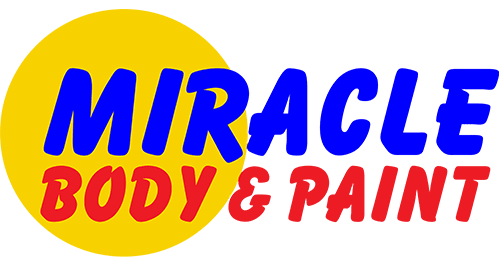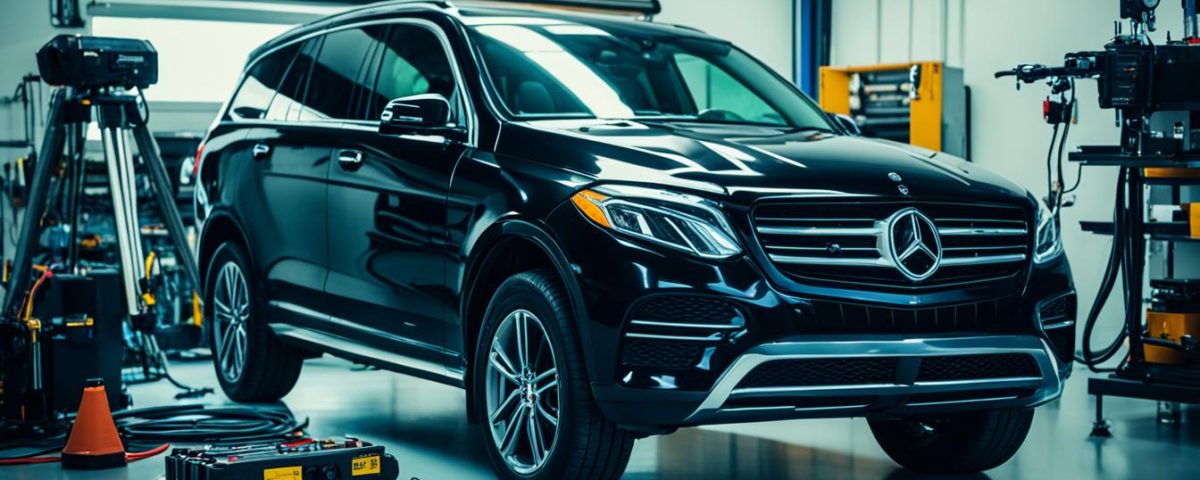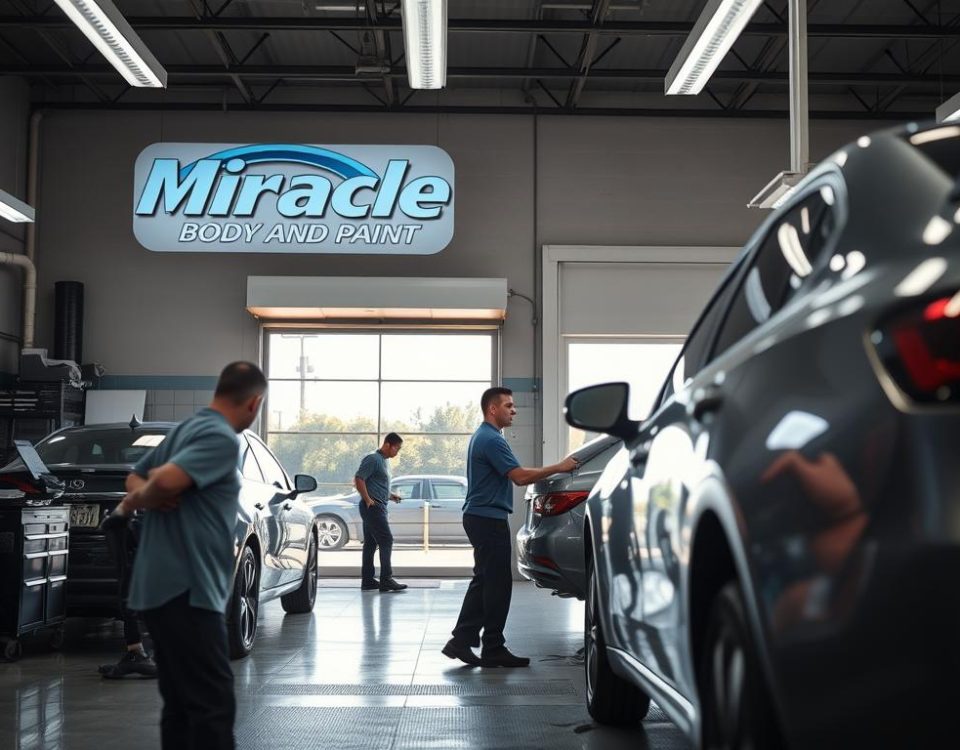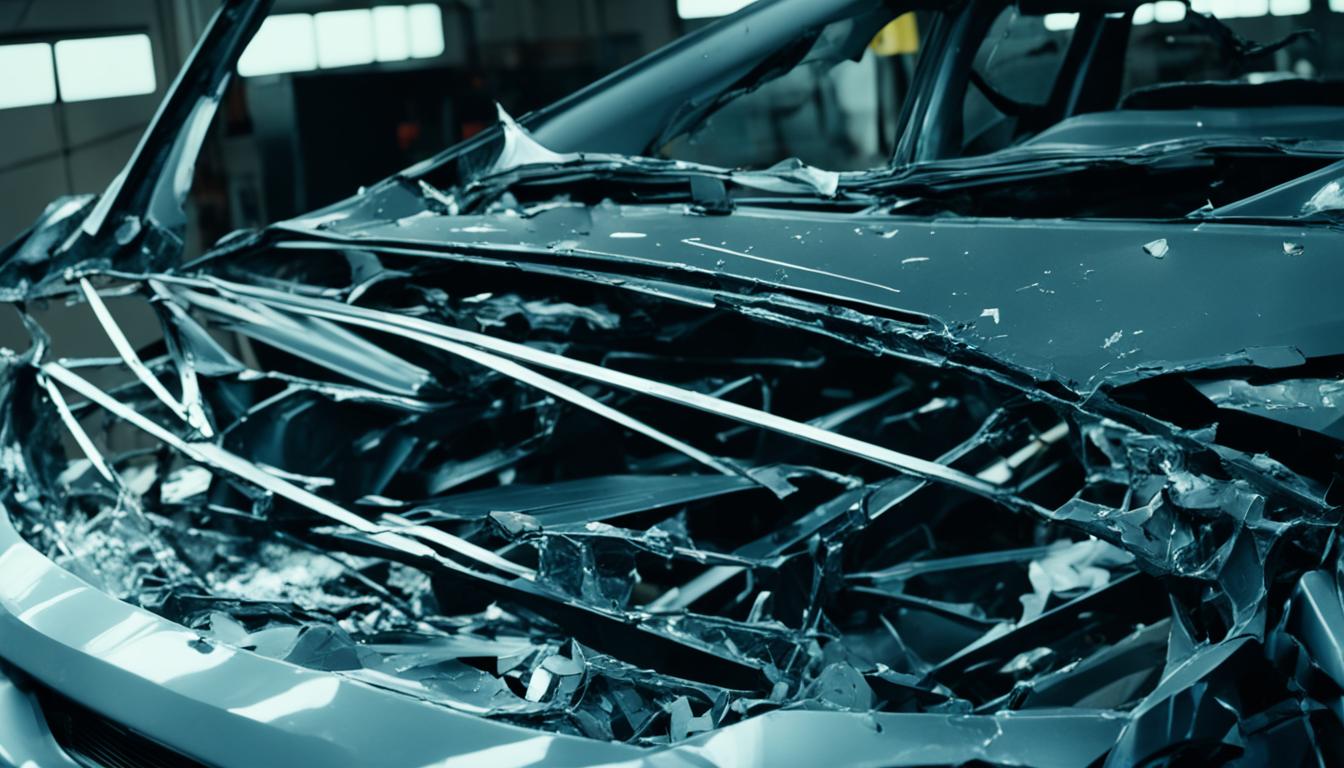
The Importance of Frame Repair After a Collision
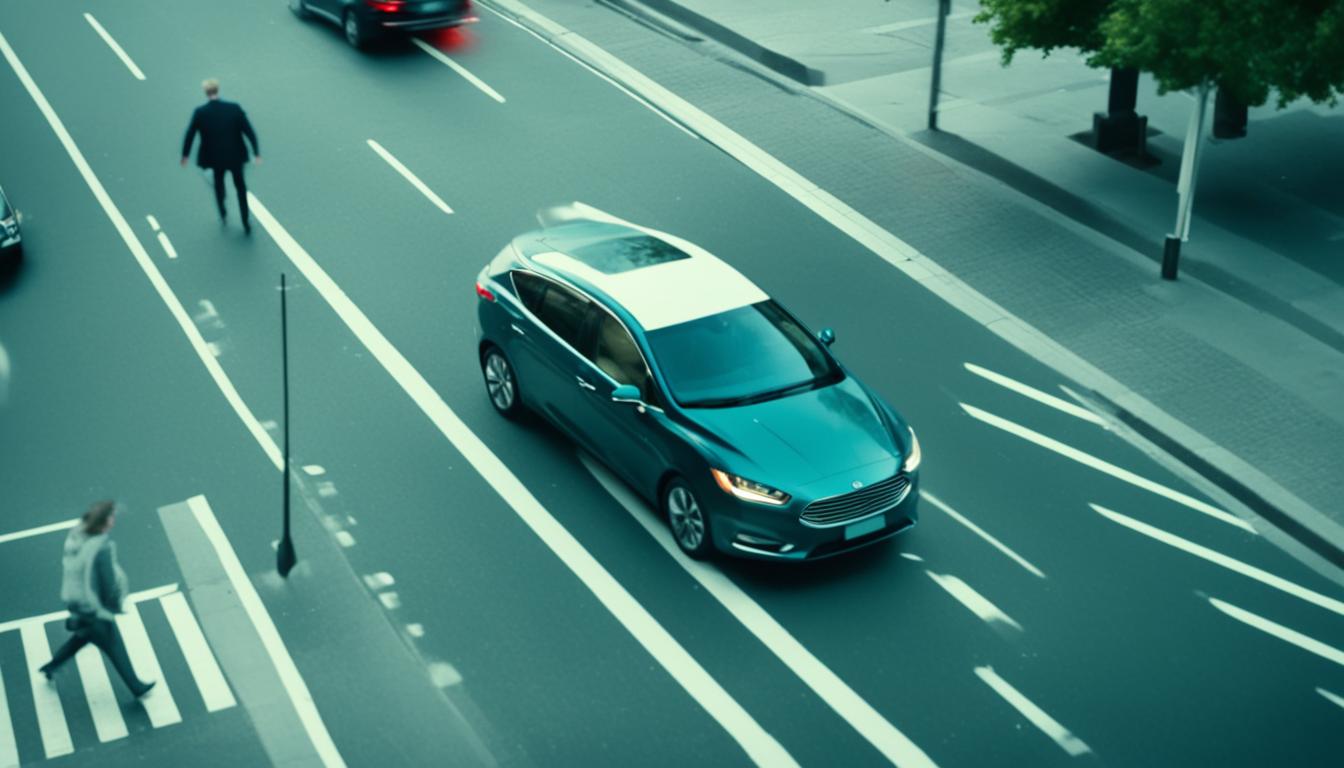
Top Road Safety Tips to Avoid Collisions
New cars come equipped with advanced driver assistance systems (ADAS) that use sensors to gather information about the vehicle’s surroundings. These ADAS systems provide safety warnings and can even temporarily control a vehicle’s braking or steering to enhance driver safety. However, the accuracy of these ADAS sensors is crucial, which is where ADAS calibration comes into play. ADAS calibration is the precise physical alignment, testing, and electronic aiming of the sensors that collect data to inform the vehicle’s advanced safety systems.
This calibration process is essential to ensure these systems are performing as designed and maintaining optimal safety standards, especially after a vehicle has undergone repairs or part replacements. Proper ADAS calibration is vital to ensure the safety and performance of your vehicle’s advanced driver assistance features.
Key Takeaways
- ADAS systems use sensors to gather information about a vehicle’s surroundings and enhance driver safety.
- ADAS calibration is the process of aligning and testing these sensors to ensure they are working accurately.
- Proper ADAS calibration is essential after vehicle repairs or part replacements to maintain optimal safety and performance.
- ADAS calibration involves both static and dynamic processes to ensure the sensors are properly aligned and functioning.
- Specialized equipment and environmental conditions are required to accurately calibrate ADAS sensors.
What is ADAS and Why Calibration Matters
Advanced Driver Assistance Systems (ADAS) are a revolutionary set of automotive safety features that use an array of sensors to enhance driver safety. These innovative ADAS systems include technologies like automatic emergency braking, lane departure warning, adaptive cruise control, and more. By continuously monitoring the vehicle’s surroundings, ADAS features work tirelessly to help prevent collisions and provide an extra layer of protection for both the driver and other road users.
Advanced Driver Assistance Systems (ADAS) Overview
ADAS systems rely on a complex network of sensors, including cameras, radar, and ultrasonic devices, to gather critical data about the vehicle’s environment. This data is then processed by sophisticated computer algorithms, enabling ADAS features to detect potential hazards and take appropriate action, such as automatically applying the brakes or gently steering the vehicle back into its lane.
The Importance of Proper ADAS Calibration
- Accurate calibration of ADAS sensors is crucial for ensuring these advanced safety features function as intended.
- Even a minor misalignment of a sensor can significantly impact the system’s reaction time and effectiveness in potentially dangerous situations.
- Without proper calibration, ADAS features may not work correctly, compromising the overall safety of the vehicle and its occupants.
Maintaining the precise calibration of ADAS systems is essential for maximizing the performance of these driver safety systems and unlocking their full potential to enhance collision avoidance and safeguard drivers on the road.
Understanding ADAS Calibration
ADAS, or Advanced Driver Assistance Systems, are a crucial component of modern vehicles, designed to enhance safety and provide drivers with valuable assistance. Proper calibration of these systems is essential to ensure they function as intended. The ADAS calibration process can be achieved through two primary methods: static calibration and dynamic calibration.
Static vs. Dynamic Calibration Processes
Static calibration is performed in a controlled environment, with the vehicle stationary. This method utilizes specialized tools and targets to precisely align the ADAS sensors, such as cameras and radars, ensuring they are accurately positioned and calibrated. On the other hand, dynamic calibration involves driving the vehicle on the road while connected to an ADAS scan tool. This allows the systems to calibrate based on real-world driving conditions, taking into account factors like vehicle speed, road conditions, and environmental factors.
Conditions and Equipment Required for Calibration
The ADAS calibration process requires specific conditions and equipment to be effective. Some of the key requirements include:
- Calibration Environment: A level, flat surface free from obstructions and with adequate lighting is essential for both static and dynamic calibration.
- Calibration Tools: Specialized tools such as ADAS calibration targets, alignment tools, and scan tools are necessary to ensure accurate sensor alignment and data collection.
- Vehicle Information: Detailed vehicle specifications, including make, model, and year, are crucial for determining the appropriate calibration procedures and requirements.
By understanding the ADAS calibration process, vehicle owners and service providers can ensure their vehicles’ safety systems are functioning optimally, providing drivers with the confidence and protection they deserve.
ADAS Calibration
At Miracle Body and Paint, we take ADAS calibration services seriously. As leaders in the industry, we understand the critical importance of precise and accurate ADAS calibration for maintaining the optimal safety and performance of your vehicle’s advanced driver assistance systems.
Our team of certified technicians is dedicated to providing the highest level of ADAS calibration expertise. We specialize in delivering comprehensive solutions, from site design and equipment installation to ongoing technical support, to help collision repair centers and automotive service providers offer top-notch ADAS calibration certification to their customers.
We believe that proper ADAS calibration is not just a service, but a vital step in ensuring your vehicle’s safety systems are working as intended. That’s why we emphasize the importance of thorough and accurate calibration, always adhering to manufacturer specifications to maintain optimal performance.
At Miracle Body and Paint, we take pride in our ability to establish ADAS Calibration Centers that meet the highest standards. Our expertise spans the entire process, from site selection and layout to the selection and installation of specialized equipment. We work closely with our clients to ensure their ADAS calibration services are tailored to their specific needs, providing ongoing support and training to ensure long-term success.
Whether you’re a collision repair center or an automotive service provider, trust Miracle Body and Paint to be your partner in ADAS calibration. With our unparalleled ADAS calibration certification and commitment to excellence, you can rest assured that your customers’ vehicles are in the best hands.
Common ADAS Sensors Needing Calibration
In the world of advanced driver assistance systems (ADAS), proper sensor calibration is crucial for ensuring your vehicle’s safety features function as intended. While not all ADAS sensors require calibration, there are several key components that commonly need to be recalibrated, especially after a vehicle has undergone repairs or part replacements.
Steering Angle Sensors
The steering angle sensor plays a critical role in ADAS functions like lane-keeping assist and lane departure warning. This sensor monitors the position of the steering wheel and helps the vehicle’s computer systems accurately detect the vehicle’s direction. Proper steering angle sensor calibration is necessary to maintain the precision of these safety-critical systems.
Front-Facing Camera Sensors
Many ADAS features, such as forward collision warning and automatic emergency braking, rely on the accurate positioning and alignment of front-facing camera sensors. Front-facing camera calibration ensures these sensors can correctly identify and respond to potential hazards in the vehicle’s path.
Forward Radar Sensors
Forward-facing radar sensors are essential for functions like adaptive cruise control and automatic emergency braking. Proper forward radar calibration guarantees these sensors can accurately detect the distance and speed of the vehicles or objects in front of your car, enabling your ADAS systems to react appropriately.
Rear Radar Sensors
ADAS features like blind spot monitoring and rear cross-traffic alert rely on the precision of rear radar sensors. Rear radar calibration ensures these sensors can effectively detect vehicles and objects in your vehicle’s blind spots and behind the car, providing you with essential safety information.
Maintaining the calibration of these critical ADAS sensors is paramount for ensuring your vehicle’s advanced safety systems continue to operate at their best, protecting you and your loved ones on the road.
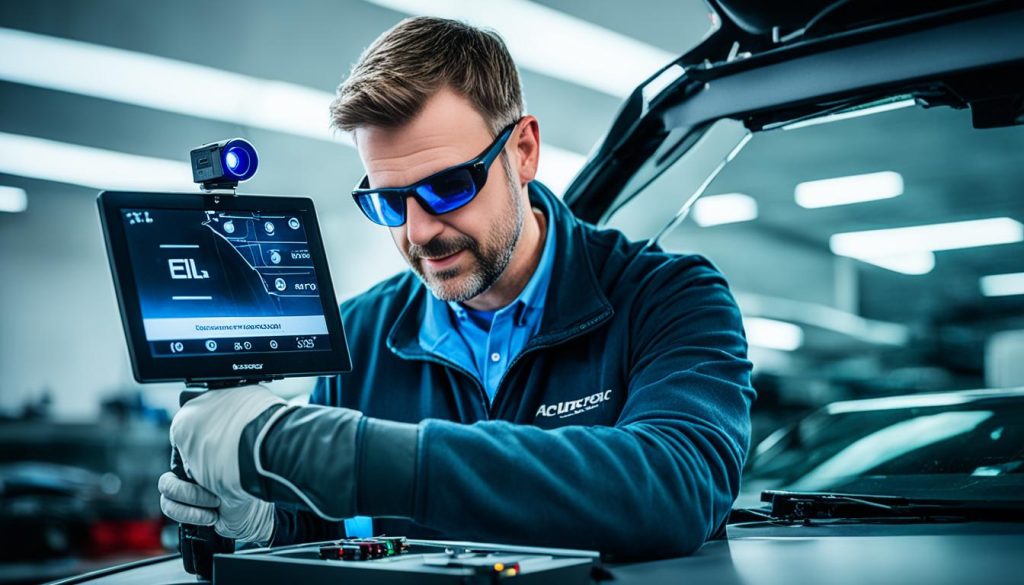
When is ADAS Calibration Required?
ADAS, or Advanced Driver Assistance Systems, play a crucial role in enhancing vehicle safety. However, to ensure these systems function correctly, ADAS calibration is often required. Let’s explore the key circumstances when ADAS calibration is needed.
Firstly, ADAS calibration is essential after any repairs or adjustments to the vehicle’s sensors or related components. This includes instances such as replacing the windshield, repairing the front bumper, or adjusting the steering angle. These modifications can affect the alignment and calibration of the ADAS sensors, necessitating a recalibration to restore optimal performance.
Additionally, ADAS calibration is recommended after any significant vehicle changes, such as a tire replacement or suspension work. These alterations can impact the vehicle’s geometry and sensor positioning, leading to the need for ADAS recalibration.
Another scenario where ADAS calibration is necessary is after a collision or accident. Even minor impacts can disrupt the delicate alignment of the ADAS sensors, compromising their ability to accurately detect and respond to various driving situations. Prompt ADAS calibration is crucial to ensure the system’s continued reliability and effectiveness.
Lastly, ADAS calibration may be required during routine maintenance or periodic inspections. Over time, the sensors and components in an ADAS system can drift out of alignment, necessitating a recalibration to maintain optimal performance and safety.
By understanding the various situations that call for ADAS calibration, vehicle owners can ensure their advanced safety systems are operating at peak efficiency, providing the utmost protection for themselves and their passengers.
The Importance of Professional ADAS Calibration Services
At Miracle Body and Paint, we understand the critical importance of proper professional ADAS calibration for maintaining the optimal performance and safety of your vehicle’s advanced driver assistance systems. ADAS calibration is a precise and intricate process that requires specialized ADAS calibration expertise.
Proper ADAS calibration safety is essential for ensuring your vehicle’s advanced safety features function as intended. These systems, such as collision avoidance, lane departure warning, and adaptive cruise control, rely on a complex network of sensors and cameras to monitor the road and your vehicle’s surroundings. If these components are not accurately calibrated, they may not work effectively, potentially compromising your safety.
Ensuring Optimal Safety and Performance
Our team of experienced technicians is dedicated to providing the highest level of professional ADAS calibration services. We use the latest diagnostic equipment and follow detailed manufacturer-recommended procedures to ensure your ADAS systems are calibrated with precision. This attention to detail is crucial for maintaining the safety and performance of your vehicle’s advanced technology.
- Comprehensive ADAS calibration services for a wide range of vehicle makes and models
- Utilization of specialized tools and equipment to ensure accurate sensor and camera alignments
- Thorough testing to validate the proper functioning of ADAS features after calibration
By entrusting your vehicle’s ADAS calibration to our team of experts, you can have peace of mind knowing that your advanced safety systems are optimized for maximum effectiveness and reliability. Prioritize your safety and that of your passengers by choosing Miracle Body and Paint for all your ADAS calibration needs.
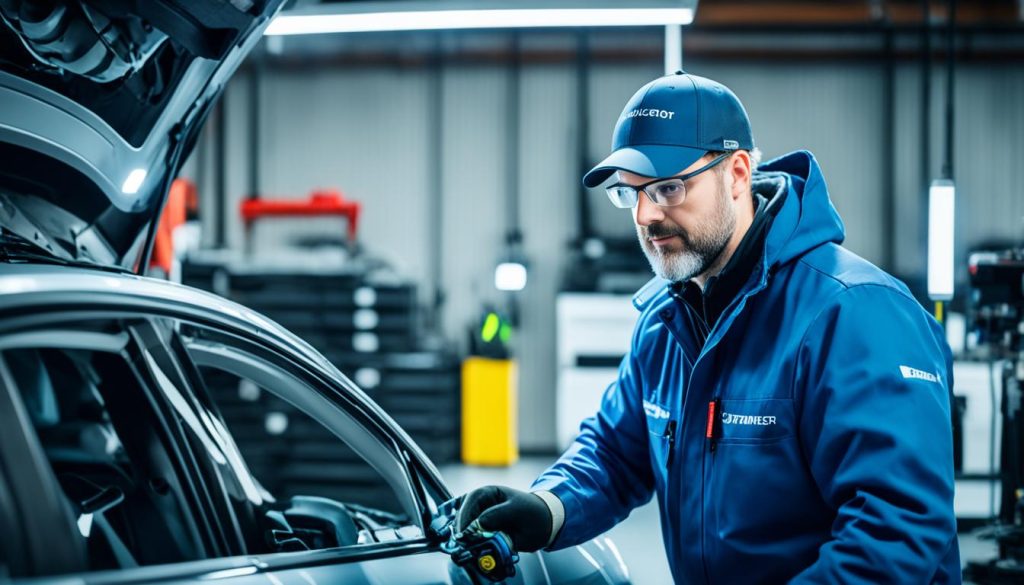
Conclusion
ADAS calibration is a critical process that ensures the proper functioning of a vehicle’s advanced safety systems. These systems, which include features like automatic emergency braking, lane departure warning, and adaptive cruise control, rely on a network of sensors and cameras to gather crucial information about the vehicle’s surroundings. Accurate ADAS calibration is essential to maintain the effectiveness of these safety features, protecting both the driver and other road users.
By regularly maintaining the calibration of ADAS components, vehicle owners and service providers can help safeguard the integrity of these advanced technologies, ultimately enhancing the overall safety and performance of the vehicle. As the automotive industry continues to evolve, the importance of ADAS calibration will only grow, making it a crucial consideration for anyone who values the well-being of themselves and others on the road.
In summary, ADAS calibration is a vital process that ensures the optimal functioning of a vehicle’s safety systems, promoting a safer and more secure driving experience for all. By prioritizing ADAS calibration, we can help keep our roads safer and contribute to the ongoing advancements in automotive technology.

